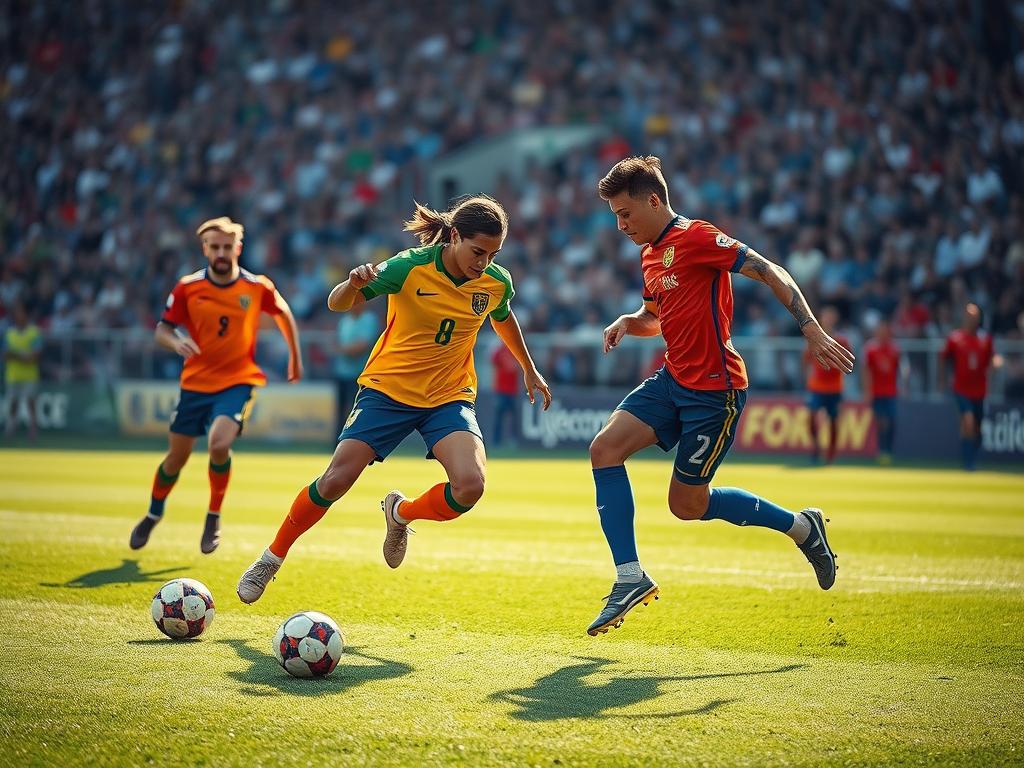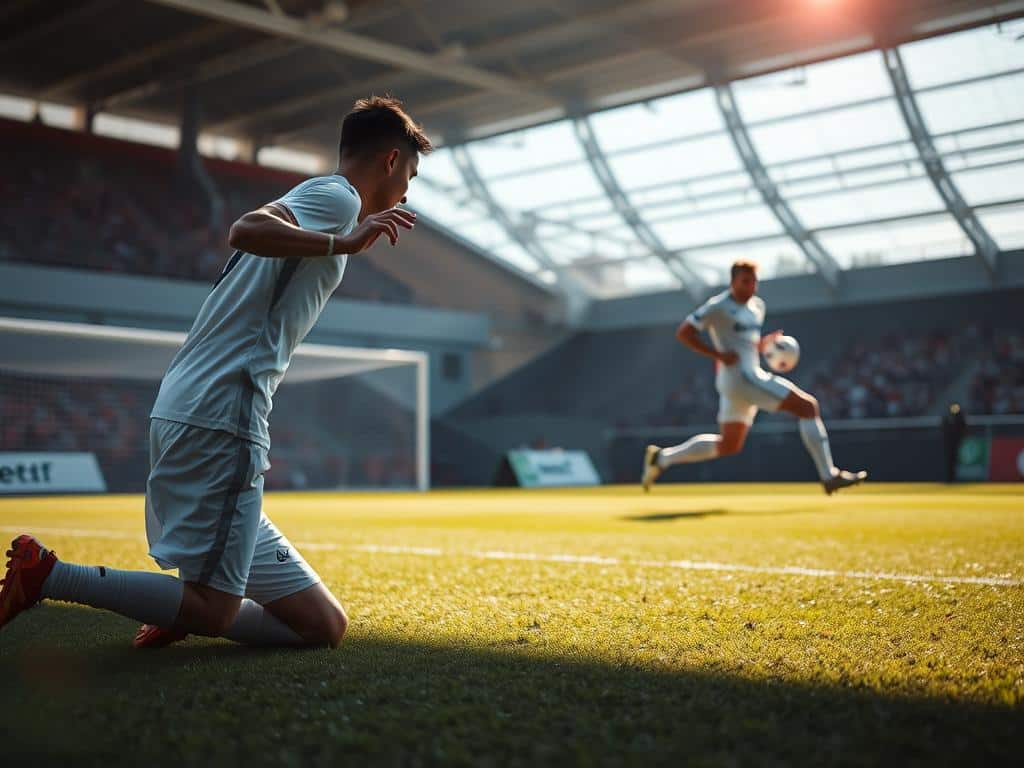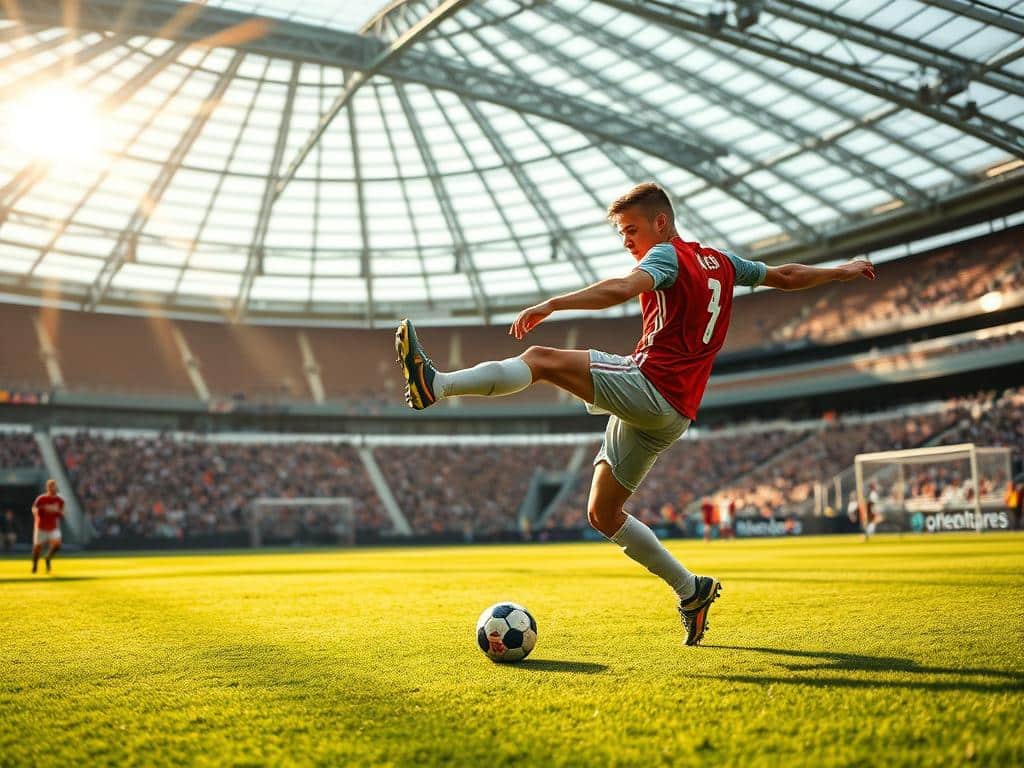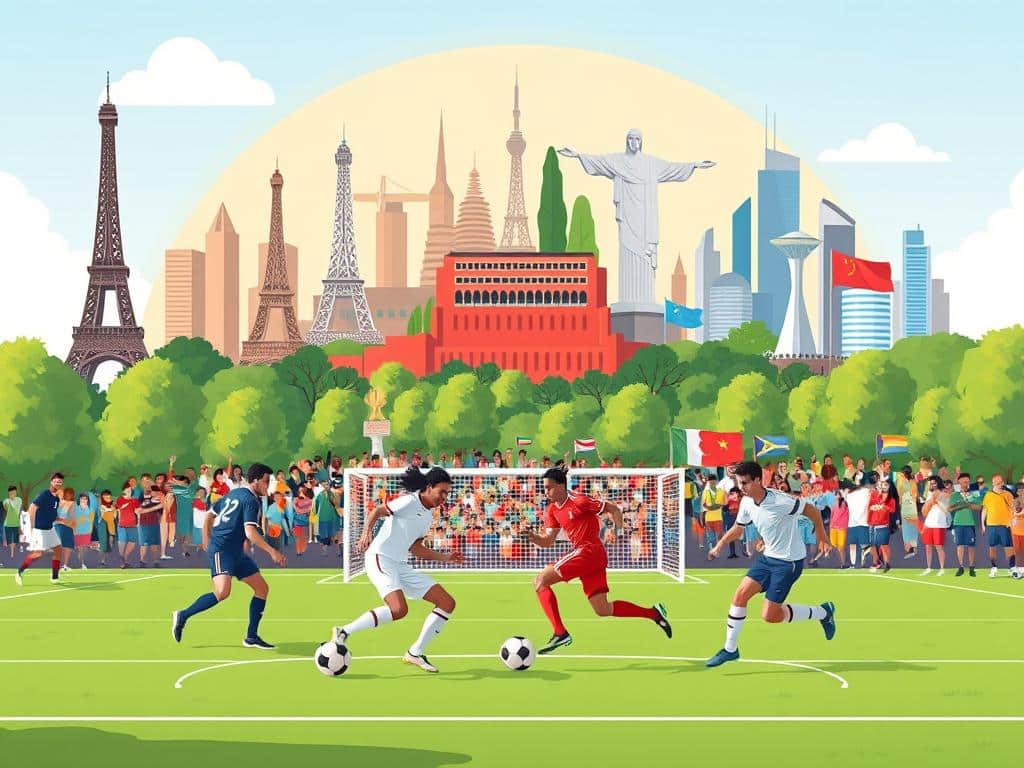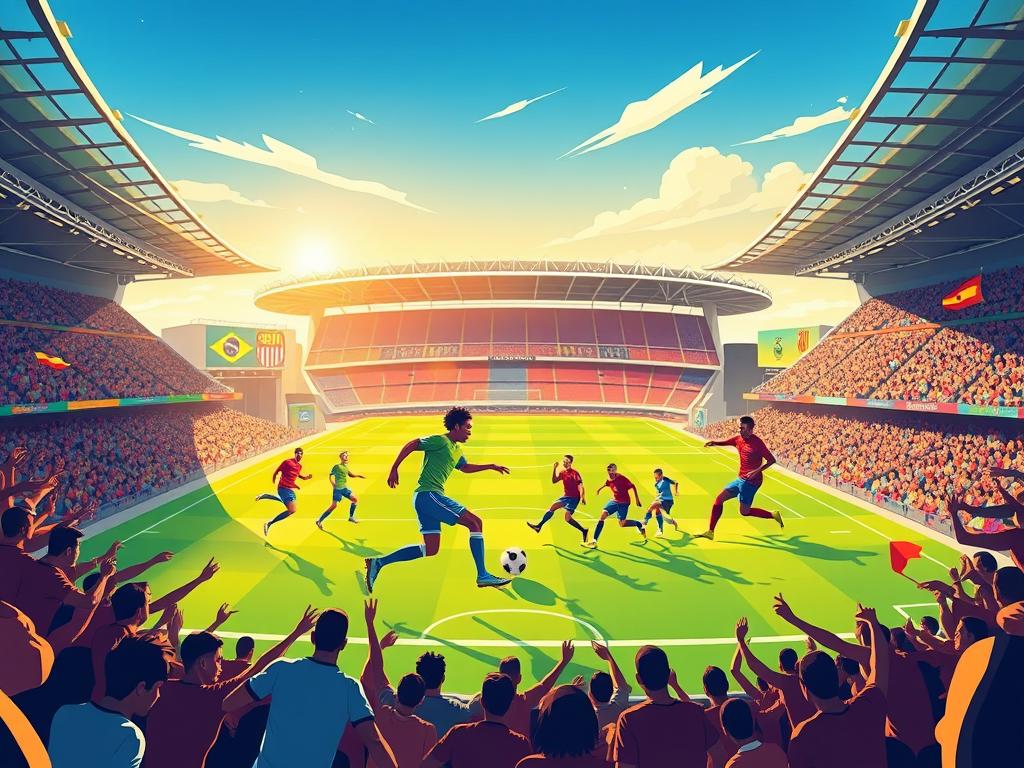You want an edge that turns tight moments into clear wins, and soccer overload tactics do just that by creating small numbers that make big differences.
Overloads happen when a team shifts players to one side to shorten distances and free passing lanes. Teams like Manchester City and Bayern often invert full-backs to form a box and outnumber the center.
Liverpool’s wide pairs build quick 2v1s. False nines and dropping pivots force defenders to follow, then the ball is switched to expose open space on the pitch.
Why it matters: these moves win possession, create time on the ball, and produce clear isolation chances 1v1. You’ll learn where to press, when to shift, and how to keep defensive balance while gaining an advantage.
Key Takeaways
- Small numerical edges change the game quickly.
- Invert full-backs and false nines create central overloads.
- Wide 2v1s isolate defenders and open space on the pitch.
- Pivots dropping into a back three beat pressing forwards.
- Switching play after drawing defenders isolates a winger 1v1.
- Focus on safe build-up to protect against counter risks.
Search intent and what you’ll learn today
Curious how teams spot the exact moment to tilt play and make chances? This section gives fast, actionable answers. You’ll get clear guidance on when to pull players into a zone and why it works in real match situations.
Where it applies: first pressing line, last defensive line, center, wings, half‑spaces, and between the lines. Effectiveness shifts with an opponent’s press—high, midfield, or low block—and with match situation and player profiles.
- You want practical rules: how these moves work and when to use them.
- We map zones and the best way to create chances from each area.
- Quick-read keys for high press, midfield press, and low block opponents.
- Ready-to-use cues so you spot opportunities and act with confidence.
By the end, you’ll know “why now?” and “what next?” for each scenario. Use these cues in time and turn brief windows into real chances on the field.
What overloads are and why they win games
Ever wonder how a single shift of players suddenly breaks a defense open? An overload happens when one side stacks more players in a zone. That extra man or two gives you time, angles, and clearer options.
Four types that change outcomes
Numerical: classic 3v2 or 4v3 in build-up. More bodies equals quicker combos and cleaner progression.
Positional: occupying half‑spaces and pockets to force the full‑back into a dilemma—step inside or hold wide?
Qualitative: use a superior dribbler or target player to win key duels and destabilize the opposition.
Socio‑affective: chemistry matters. Pairs who time runs and passes perfectly create repeated chances.
In possession vs. out of possession
In possession, teams shift roles to outnumber centrally or on the flank. Full‑backs can invert to form a box midfield. False nines drop to overload central lanes.
Out of possession, low blocks pack numbers around the center‑backs to protect danger areas and force long passes. A simple example: a pivot drops into a back three and neutralizes a two‑man press.
- Why it wins: more support means better passing options, improved angles, and higher shot quality.
Core principles: creating numerical superiority in the right area of the pitch
Nailing the right area of the pitch gives you more time, clearer lanes, and easier chances. The idea is simple: win time, win space, and stack passing options to snowball control.
Time, space, and passing options: the triangle that drives advantage
Time comes from extra support — a spare player buys a second to decide.
Space appears when defenders are drawn out of position.
Passing options arrive via angles and rotations. Make the triangle real: extra receiver, cleaner lane, safer touch.
Build-up shapes that enable superiority
Use compact shapes like 3-2 at the back or 2-3-5 higher up to add an extra man where it counts. Flexible systems flip between 3-2-5 and 2-3-5 to keep pressure on the opponent.
Pep Guardiola often inverts a full‑back to form a box midfield, shifting shape and dominating central lanes.
Overload-to-isolate: draw, switch, and attack 1v1
Pull defenders to one side, then switch quickly to isolate a winger 1v1. Think Ribéry and Robben: draw, flip, and finish.
- The principle is simple: win time, win space, and stack passing options—your control snowballs.
- Shapes like 3-2 in build-up or 2-3-5 higher up add an extra man where it matters.
- Adjust the target area to match the press you face. Where is the next advantage?
How to create overloads during build-up play
Small coordinated movements in build-up can turn pressure into progress—here’s how. Use simple rules and timed runs to open lanes and move the ball forward with purpose.
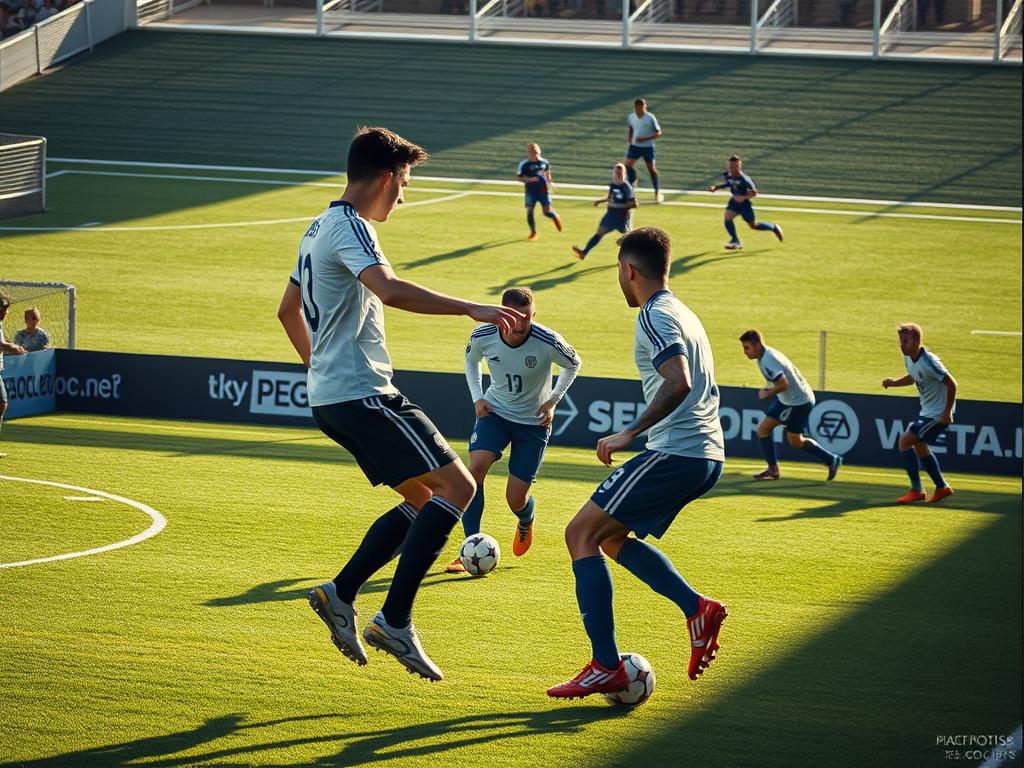
Overlap and underlap to force 2v1s
Overlap and underlap runs force defenders into decisions and create instant 2v1s. In a 4-3-3 the full-back tucking inside forms a box midfield and drags markers out of position.
Example: Liverpool’s wide pairs use overlapping full-backs to free the winger for a shot or cut-back.
Third‑man runs and wall passes to break lines
Use a wall pass to bypass the press. The third‑man times the sprint to receive the return and burst behind the first line.
These quick passing combos make local superiority and force the opponent to shift.
Rotations and inverted full-backs to control midfield
Rotate winger, full‑back, and an eight on the strong side to confuse marks. Inverting a full‑back gives your midfield an extra outlet and cleaner passing lanes.
Study Pep Guardiola’s sides for how tucked full-backs create central control.
Dropping pivot into a back three to beat two strikers
A pivot who drops into a back three outnumbers two forwards and opens new corridors. Names like Rodri, Busquets, and Fabinho excel at this role.
- Keep support distances tight to speed play.
- Use clear triggers—touch line or body cue—to start the third‑man run.
- Practice rotations so players read each other and finish runs on time.
Overloading the opponent’s first pressing line (own build-up zone)
Want to take the heat out of aggressive pressing and build calmly from the back? Start by packing players into your build-up zone to steal space and gain seconds on the ball.
Functionality: lure-and-shock, control possession, protect against counters
The lure‑and‑shock idea is simple. Invite the press, then spring the pass into space they’ve vacated.
Real example: Real Madrid used this to bypass Stuttgart in 2024/25 — they drew defenders up, then attacked the gap behind the press.
Impact vs. pressing types and goal-kick notes
This approach is particularly effective vs a high press and often wins vs a midfield press. It is less useful against a passive, low block.
At goal kicks you face extra risk: the ball is static and the goal line limits retreat. Many teams struggle to escape when the opposition traps the keeper.
Player profiles and roles
Use the GK, a pivot, and tucked full‑backs to create numerical control in that specific area pitch. That can become a 6v3 on the first line.
Fast wingers then attack the space behind when opponents step up. Track how opponents react — if they add a presser, your next pass can break two lines.
- Calm chaos: overloads buy time and protect the ball near your box.
- Lure, then shock: invite pressure, then hit the gap.
- Watch goal kicks: static ball equals higher risk at the back.
Overloading the opponent’s last defensive line
Pinning the last defensive line forces choices that open direct routes to goal. Use vertical passes and timed depth runs to create 1v1s. Those duels test defenders and often spark quick turnovers you can exploit.
Vertical play, depth runs, and provoking counter-pressing
Vertical play pushes the ball through pacey channels to pin center-backs. Aggressive depth runs stretch cover and make risky decisions more likely.
Each lost ball is an opportunity: counter-press in numbers around the point of loss. Liverpool’s approach proves how frequent forward passes fuel instant pressure and recovery.
Pressing variations: attacking/midfield press vs. low block
This method is particularly effective vs teams that hold a high or midfield line. Against a deep low block, shift your overload a few yards in front of the defensive line instead.
Player profiles
What matters: ball‑playing CBs who break lines, dynamic full-backs who stretch wide, an athletic target forward to hold and spin, and 1v1 wingers to finish.
- Stack the last defensive line and play vertically to pin defenders.
- Mix opposite movements—one drops, one runs in behind—to unbalance cover.
- Time the through ball: early release beats traps; late release draws defenders out of shape.
Overloading the center to dictate the game’s rhythm
The middle of the pitch is a command center—who controls it often controls the game. Push numbers centrally and you shorten the route to goal. That change speeds attacks and makes your counter‑press hit faster.
Transition strength: central compression brings the ball closer to support. When you lose possession, distances shrink and the team wins seconds to recover. That’s the real advantage of owning the middle.
Counter-pressing and the shortest route
A dropped false nine adds a player between lines and sparks fast third‑man passing. Quick bounce passes keep the rhythm high and unsettle defenders. Small movements turn closed lanes into clear vertical passing channels.
Examples that teach
Messi and Fàbregas both used those drops to link runners and create chances. Under Pep Guardiola, an inverted full‑back forms a box midfield to dominate central lanes and then pivot play to any wing.
- Own the middle, own the match—shortest path to goal and fastest reactions after loss.
- Central overloads compress distances so you reach the ball quicker.
- Use quick passing and small movements to unlock vertical options and keep tempo high.
Want drills to sharpen central passing and movement? Try the focused passing patterns in this guide: Iniesta passing drills.
Wide and half‑space overloads for penetration
Wide channels and half-spaces are where quick numbers turn into real chances. Focus on the strong side, create the 2v1, and force a decision from the defenders. Quick supports and clear passing make the difference.
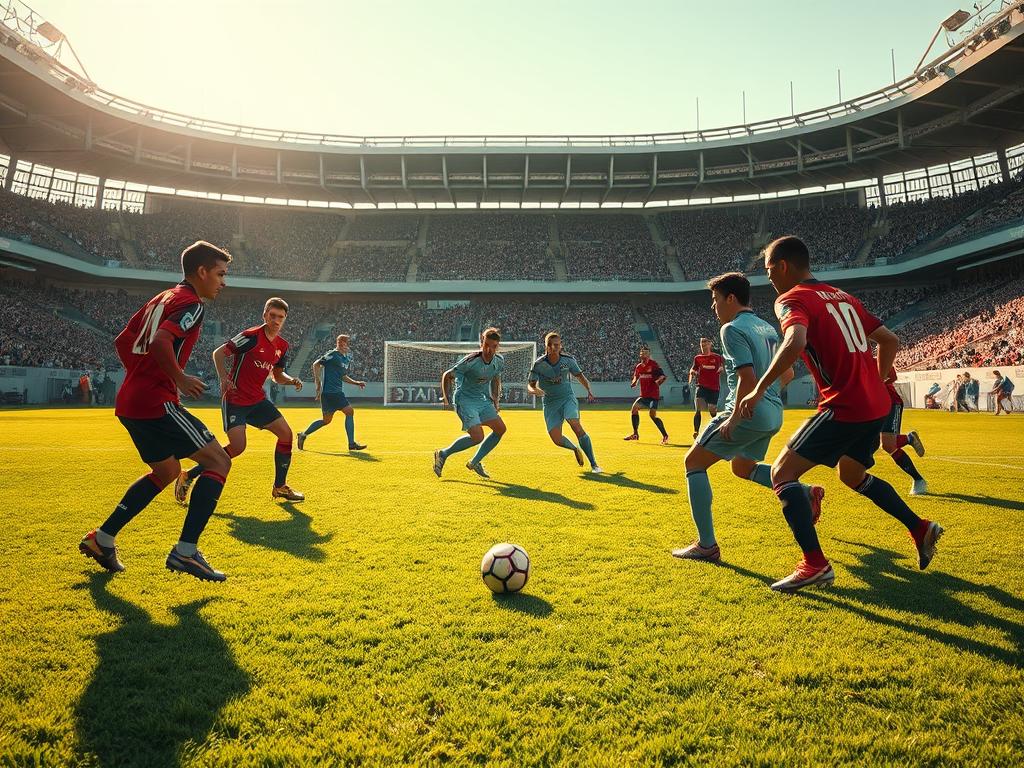
Creating 2v1s on the flank: use overlaps to pin the full-back or underlaps to hit the inside channel. The common 2v1 wide often comes from a tucked full-back and a winger ready to sprint. Think Salah with Alexander‑Arnold, or Mané with Robertson—pairs that repeat patterns and punish mistakes.
Half-space occupation: pull a center-back into a handover and crack the back four. Commit numbers one side, then switch to isolate a wide player 1v1. The timing, weight, and angle of the passing decide whether the runner can attack at full speed.
- Create a 2v1 and attack the byline or cutback area for immediate penetration.
- Show the ball, slip the support at the last moment to freeze markers.
- Keep two passing options alive: cross early or slide the cutback when defenders turn.
Soccer overload tactics: how to read opponents and choose the right solution
Reading the opponent quickly lets you pick the right play and win small battles across the pitch.
Scanning pressing style, defensive line height, and compactness
Start with a fast scan. Who presses? How high is their line? How compact are their blocks?
High or midfield press often invites build‑up overloads to draw and split them. If the line sits high, stack the last line and go vertical.
Compact low blocks demand presence between the lines. Slip passes and cutbacks beat a packed middle.
When to switch from build-up overloads to last-line or between-the-lines
Watch cues. If your exits stall, move the overload area quickly. Measure how the opponents react—if they add a presser, the weak side opens.
- Use the build‑up when pressure is high; draw and split the press.
- Attack the last line when depth is available and the carrier is under light pressure.
- Shift to between‑the‑lines when the low block refuses to stretch.
- Live example: Barcelona’s offside trap limits depth runs; Real Madrid overloaded their build‑up in the 2023/24 UCL final to beat Dortmund’s midfield press.
Remember: the right solution exploits today’s situation, not yesterday’s plan. Read the game, adapt your way, and take advantage of brief windows before they shut.
Coaching the behaviors: training activities to create overloads
Drills that force decisions under pressure build the habits that win games. Start with small-sided work to teach quick reads and tight support. Keep sessions focused and repeatable so players learn the cues.
Positional play rondos and third‑man patterns
Use rondos to teach third‑man patterns and fast superiority near the ball. Set grids with one extra inside to coach numerical superiority.
Vary constraints: two‑touch, directional goals, and bounce targets. These force quick passing and correct movements.
Inverted full‑back build-ups
Replicate City/Bayern box midfield shapes. Rehearse the inverted full‑back step under pressure so the team forms a compact box. Script rotations among full‑back, winger, and eight.
Wide 2v1s and rapid switches
Finish sessions with wide 2v1 patterns that train fast switches to isolate a winger 1v1. Focus on timing so runs meet passes at top speed.
- Key habits: hardwire third‑man combos and fast support.
- Layer movement cues: open body, set touch, scan.
- Use situational constraints to simulate match pressure.
| Drill | Focus | Outcome |
|---|---|---|
| Rondos (4v2+1) | Third‑man passes, quick support | Fast decision-making; stronger numerical superiority |
| Inverted FB box (6v4) | Compact build-up, rotation timing | Reliable box midfield under pressure |
| Wide 2v1 + switch | Switching play, isolating winger | Effective 1v1 finishes and clear passing lanes |
| Constraint game | Two-touch, directional targets | Improved passing speed and movement recognition |
Risk management, metrics, and cues to take advantage
Watch both sides. When you shift players to press or create an area pitch advantage, you also free opponents elsewhere. That can expose the far side in a heartbeat. Plan who drops back and how many stay high.
Common risks to manage
Every overload frees someone. That creates transition gaps and can lead to quick counters.
Goal-kick traps are another hazard: static restarts and the goal line limit escape options. Vary exits and pre-plan moves to avoid predictable cues.
Keep two or three players ready to handle the first ball and the second ball after a clearance.
What to track as leading indicators
Measure entries behind the defensive line, not just shots. Those entries predict real opportunities.
Count immediate ball recoveries after loss. Fast counter-press wins keep possession and punish risky plays.
Also track progressive pass timing and weight. Late or heavy passing kills a runner’s chance.
| Risk or Metric | Why it matters | How to act |
|---|---|---|
| Exposed far side | Leads to direct counters and high-quality chances | Assign a back to cover or rotate midfielders quickly |
| Goal‑kick traps | Static restart limits movement and boosts pressing success | Vary restarts; pre-plan keeper exits; avoid repeat cues |
| Entries behind defensive line | Strong predictor of scoring opportunities | Track frequency and adjust where you target next |
| Immediate recoveries | Shows effectiveness of counter-press | Drill recovery patterns and reward fast wins |
- Audit which specific area pitch you target most and whether it pays off.
- Use these cues to seize — then take advantage of — brief windows when they open.
Conclusion
Conclusion
Mastering small edges across the pitch is what separates good teams from great ones. Elite sides—from Pep Guardiola’s City to Klopp’s Liverpool—use targeted overloads to break lines, isolate wingers, and speed chance creation.
Pick the area. Add a player. Move fast. Protect transitions. Use a clear blueprint: create overloads and act before the window closes.
Key idea: use numerical advantage to buy time and space, then finish with quality. Keep cover behind the ball so your team can sustain pressure and protect leads.
Scan, select, commit, execute. Make overloads your language of advantage and repeat it until it becomes instinct.

